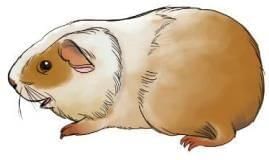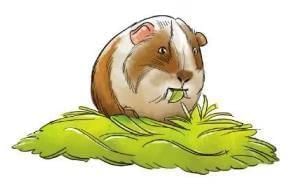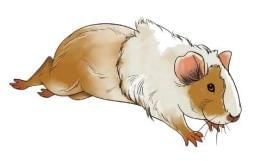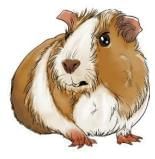Summary: The Guinea Pig | English Class 3 ICSE PDF Download
| Table of contents |

|
| Introduction |

|
| Key Points of the Poem |

|
| Summary |

|
| Message |

|
Introduction
"The Guinea Pig" is a simple and fun poem from a British rhyme. It tells the story of a small guinea pig, its habits, and what it does. The poem uses easy words to describe the guinea pig's life and ends with a surprising event.

Key Points of the Poem
- The poem is about a small guinea pig that is kept as a pet.
- It talks about the guinea pig’s habits and behavior.
- The poem ends with a surprising ending about the guinea pig’s life.
Summary
Stanza 1
There was a little guinea pig,
Who, being little, was not big.
He always walked upon his feet,
And never fasted when he'd eat.
This stanza introduces a tiny guinea pig that is not large. It walks on its feet and always eats without skipping meals.

Stanza 2
When from a place he ran away,
He never at that place did stay;
And while he ran, as I am told,
He never stood still for young or old.
This stanza describes how the guinea pig runs away from places and never stays where it was. It keeps moving and never stops for anyone, young or old.

Stanza 3
He often squeaked and sometimes was violent,
And when he squeaked he never was silent.
Though never instructed by a cat,
He knew a mouse was not a rat.
This stanza tells us the guinea pig often makes high-pitched noises and can sometimes be rough. Even without a cat teaching it, it knows a mouse is different from a rat.

Stanza 4
One day, as I am certified,
He took a whim and fairly died;
And as I'm told by men of sense,
He never has been living since.
This stanza says that one day, the guinea pig had a sudden wish and died. Since then, it has not been alive, as told by sensible people.
Message
The poem shows the fun and lively nature of a guinea pig and reminds us that life can sometimes be full of surprises.
New Words with Meanings
- Fasted: Did not eat any food at all
- Squeaked: Made a short, high-pitched noise
- Violent: Using physical force to hurt someone
- Certified: Told as the truth
- Whim: A sudden wish without any reason or purpose
- Fairly: Actually
|
36 docs|18 tests
|
FAQs on Summary: The Guinea Pig - English Class 3 ICSE
| 1. What is the main theme of the poem "The Guinea Pig"? |  |
| 2. How does the poem portray the relationship between children and their guinea pig? |  |
| 3. What literary devices are used in "The Guinea Pig"? |  |
| 4. What message does the poem convey about responsibility? |  |
| 5. Why is the guinea pig an effective symbol in the poem? |  |














